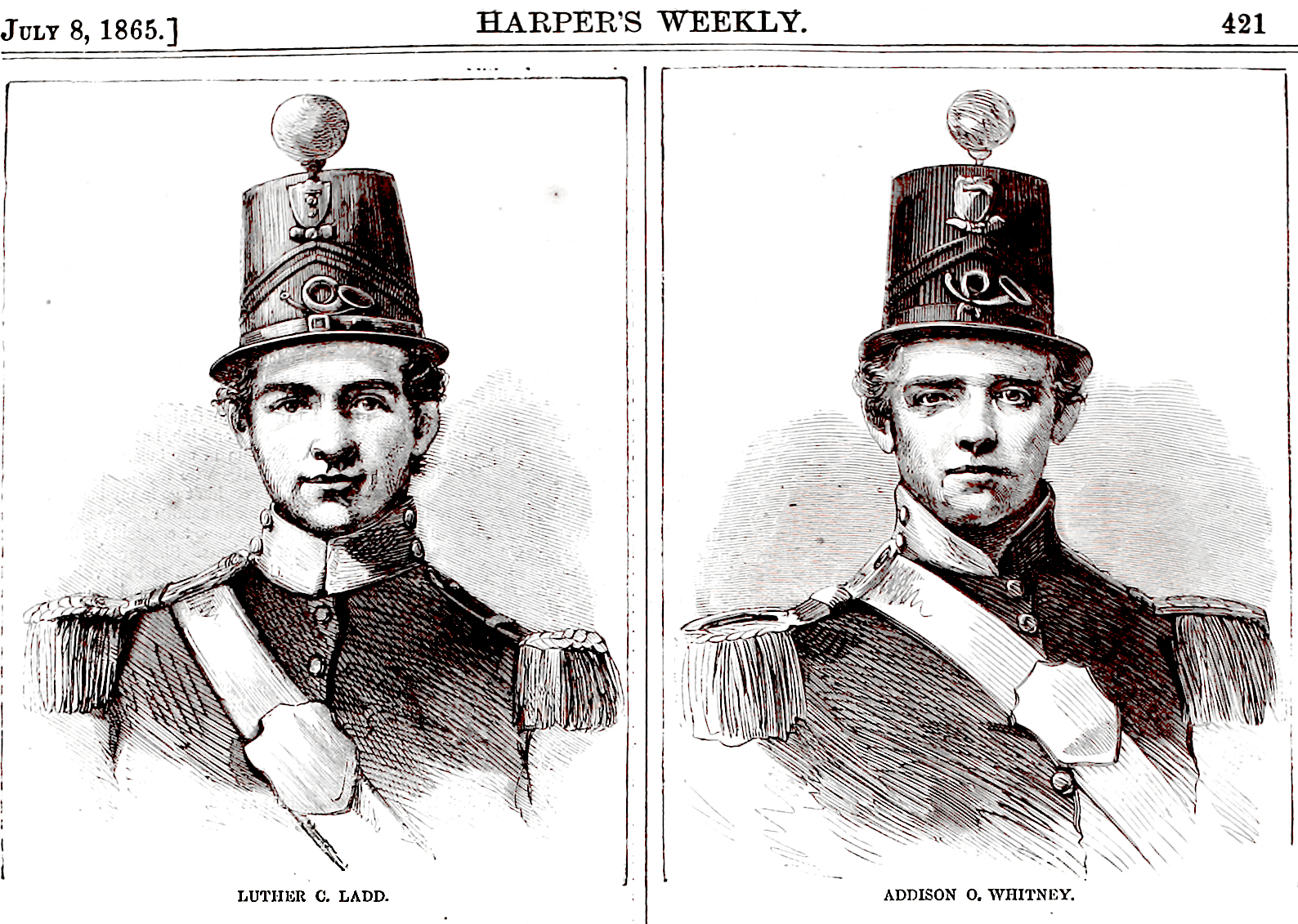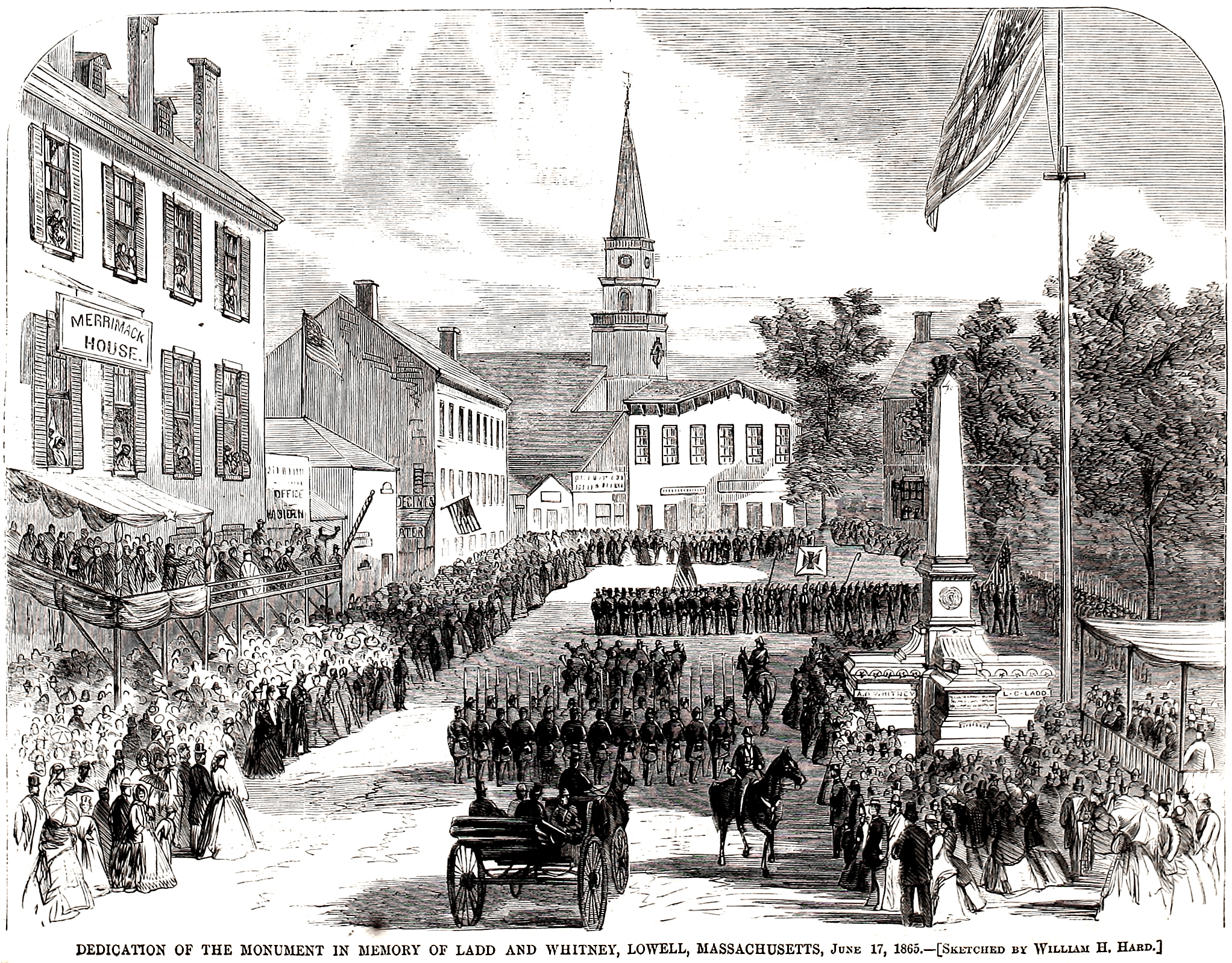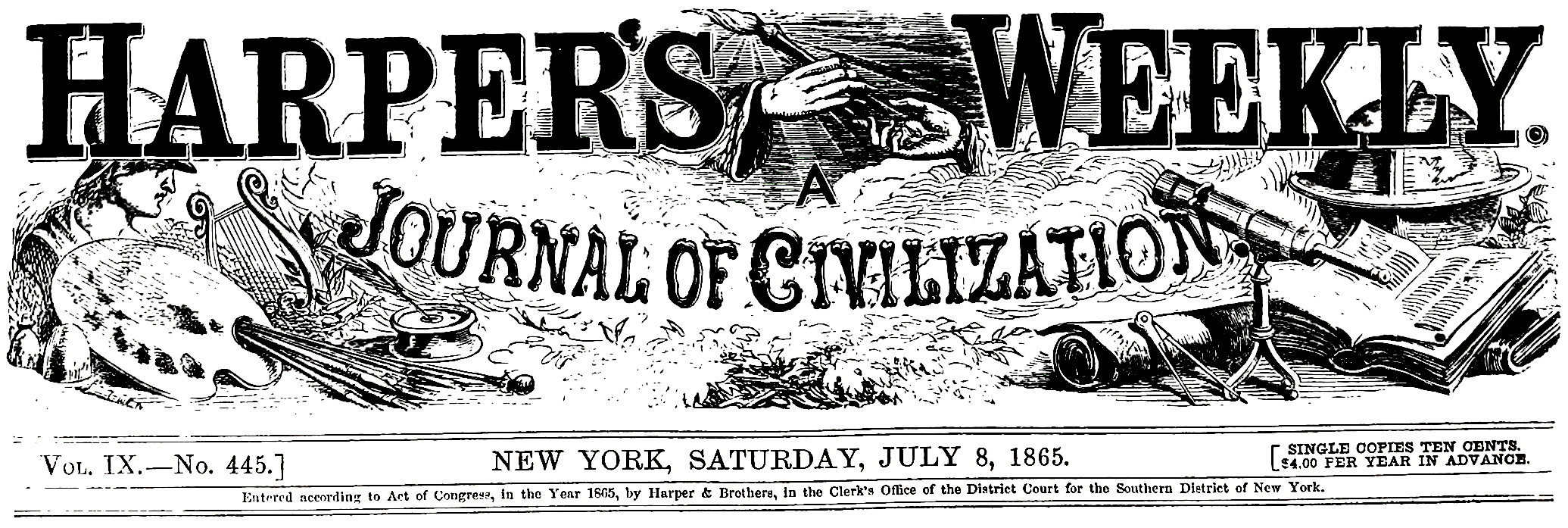
The Ladd and Whitney Monument at Lowell
On the 17th of June the city of Lowell, Massacbusetts, in common with the highest authorities of the State and the nation, paid public honors to the memory of Luther C. Ladd and Addison O. Whitney, the first martyrs of the great rebellion, by the dedication of a splendid monument over their remains.
In response to the President's call of April 15, 1861, for 76,000 three months' troops, the Sixth Massachusetts started from Lowell on the morning of the 16th, under the command of Colonel E. F. Jones. There were eight companies, one half of which were from Lowell, two from Lawrence, and one each from Groton and Acton. At Boston three additional companies joined them—one from Boston, another from Worcester, and a third from Stoneham. All along its route through New York and Philadelphia the regiment was received with the loudest acclamations. On the 19th of April it reached Baltimore. Passing through the city in horse-cars, the regiment was attacked by a furious mob. Leaving the cars, the soldiers attempted to march to the Washington dépôt on foot. But the fury of the mob only increased, and in some instances fire-arms were discharged, until at length the regiment was compelled to return the fire, killing and wounding a number of their assailants. In this encounter Ladd and Witney, of Lowell, and Charles A. Taylor, of Boston, were killed, and Sumner H. Needham, of Lawrence, were mortally wounded.
These were the first lives lost in the war, no one having been killed in the attack on Fort Sumter the week before. It readily occurred to all that this melancholy event took place on the anniversary of the battle of Lexington, adding fresh interest to that memorial day.
On Monday, May 6, nearly three weeks after the affray, the bodies of Witney and Ladd reached Lowell, and their funeral was celebrated in Huntington Hall. A larger funeral cortége than had ever before been seen in Lowell followed the remains from the Hall to the Cemetery.
The manner in which these men were killed naturally awakens an interest in their previous life. Whitney was born in Waldo, Maine, October 30, 1839, and was scarcely twenty-two years of age at the time of his death. He had been in Lowell two years, in the employ of the Middlesex Company. Ladd was born at Alexandria, New Hampshire, December 22, 1843, and was only seventeen years old when he died. With the exception of this brief record there is nothing noticeable in the career of these two heroes thus suddenly glorified by death for their country's sake. Both of them bad a stainless moral reputation.
In 1863 the Massachusetts Legislature appropriated $2000 for the erection of a monument to Ladd and Whitney, provided Lowell would raise an equal sum. The monument was erected early in April of this year, in Merrimac Square—hereafter to be known as Monument Square— and arrangements were made for its dedication on the 19th of that month. The ceremony was postponed on account of the death of President Lincoln.
The monument is of Concord granite. The plan is cruciform, measuring fifteen feet on the longer arms and twelve feet on the shorter. The whole height is twenty-seven feet and six inches. The prominent features of the design consist of a central shaft placed upon a plinth, and also of a high base, upon two sides of which, forming the longer arms, are two sarcophagi, having on each side, respectively, the names of the martyred soldiers, L. C. Ladd and A. O. Whitney, and inserted in the ends are raised laurel wreaths.
The cornices of the sarcophagi are ornamented with thirteen raised stars. Upon the other two sides of the base, forming the shorter arms, are two plinths, the same height of the sarcophagi, with the
inscriptions. On the Merrimac Street side are the words:
“Addison O. Whitney, born in Waldo, Me., Oct. 30, 1839. Luther C. Ladd, born in Alexandria, N. H., Dec. 22, 1843; marched from Lowell in M. V. M., to the defense of the National Capital, and fell mortally wounded in the attack on their regiment while passing through Baltimore, April 10th, 1861. The Commonwealth of Massachusetts and the City of Lowell dedicate this monument to their memory.
On the Moody Street side is the following:
“Nothing is here for tears, nothing to wail
Or knock the breast; no weakness, no contempt,
Dispraise or blame; nothing but well and fair,
And what may quiet us in a death so noble.
The horizontal arc merged into the vertical lines by fluted trusses, with raised stars resting upon the four arms, and above these is a plinth with a moulded base and ornamented cornice, on two sides of which are bronze medallions of the coat of arms of the State of Massachusetts and of the city of Lowell. Upon this plinth is a shaft terminating with a pyramid, below which there aro four stars, one on each side. The composition has a pleasing outline, and is highly creditable to the taste of the committee and the skill of the designers.

—[Sketched by William H. Hard.]
The dedicatory ceremonies were simple and appropriate. After the arrival of the procession at Monument Square Governor Andrew delivered an eloquent address, which thus concludes:
“Let this monument stand as long as the Merrimac runs from the mountains to the seas; while this busy dream of human life sweeps on by the banks of the river, bearing to eternity its freight of destiney and hope. It shall speak to your children not of death but of immortality. It shall stand here, a mute, expressive witness of the beauty and the dignity of youth and manly prime consecrated in unselfish obedience to duty. It shall testify that gratitude will remember, and praise will wait on the humblest, who by the intrinsic greatness of their souls or the worth of their offerings, have risen to the sublime peerage of virtue.”

